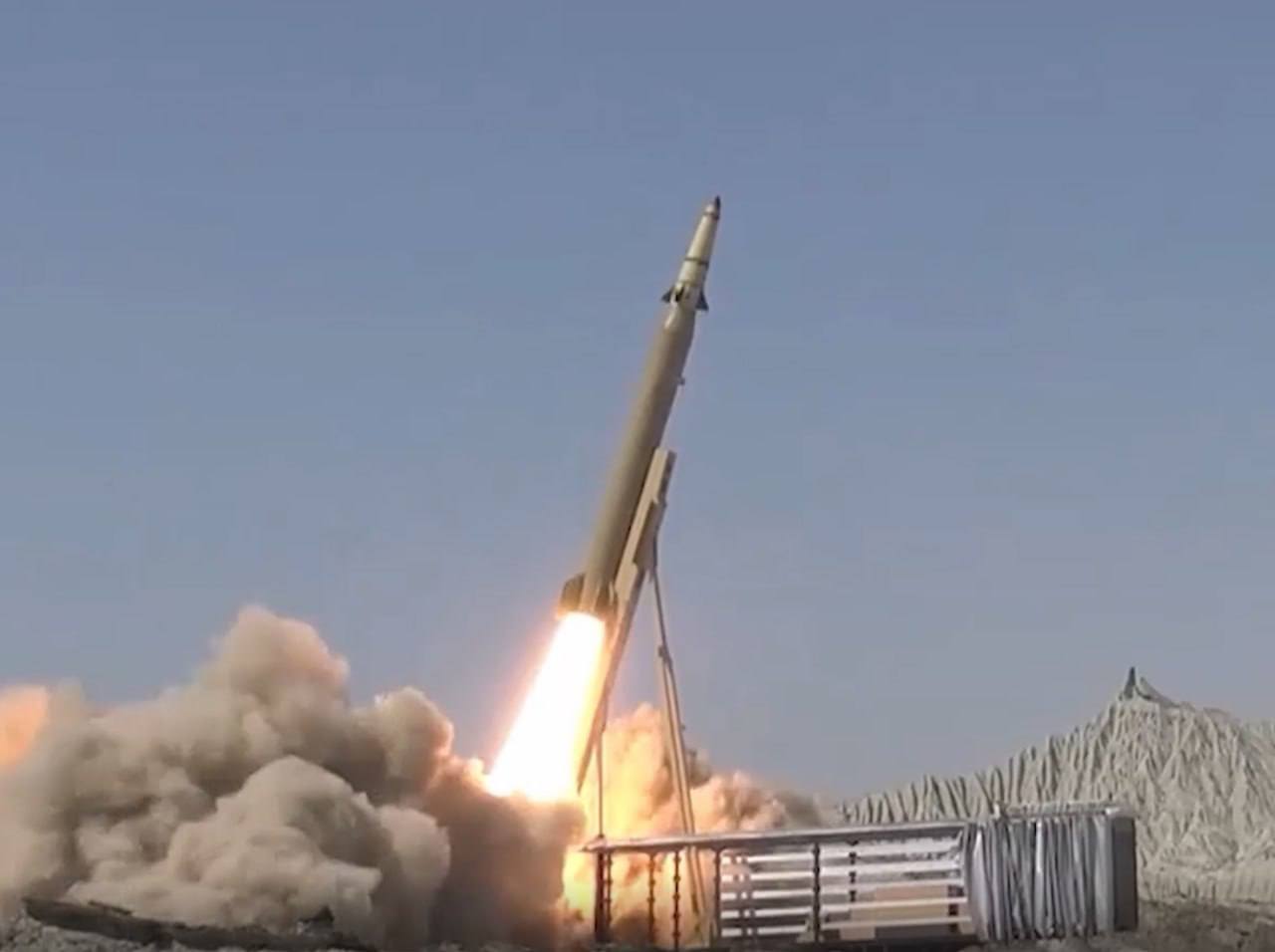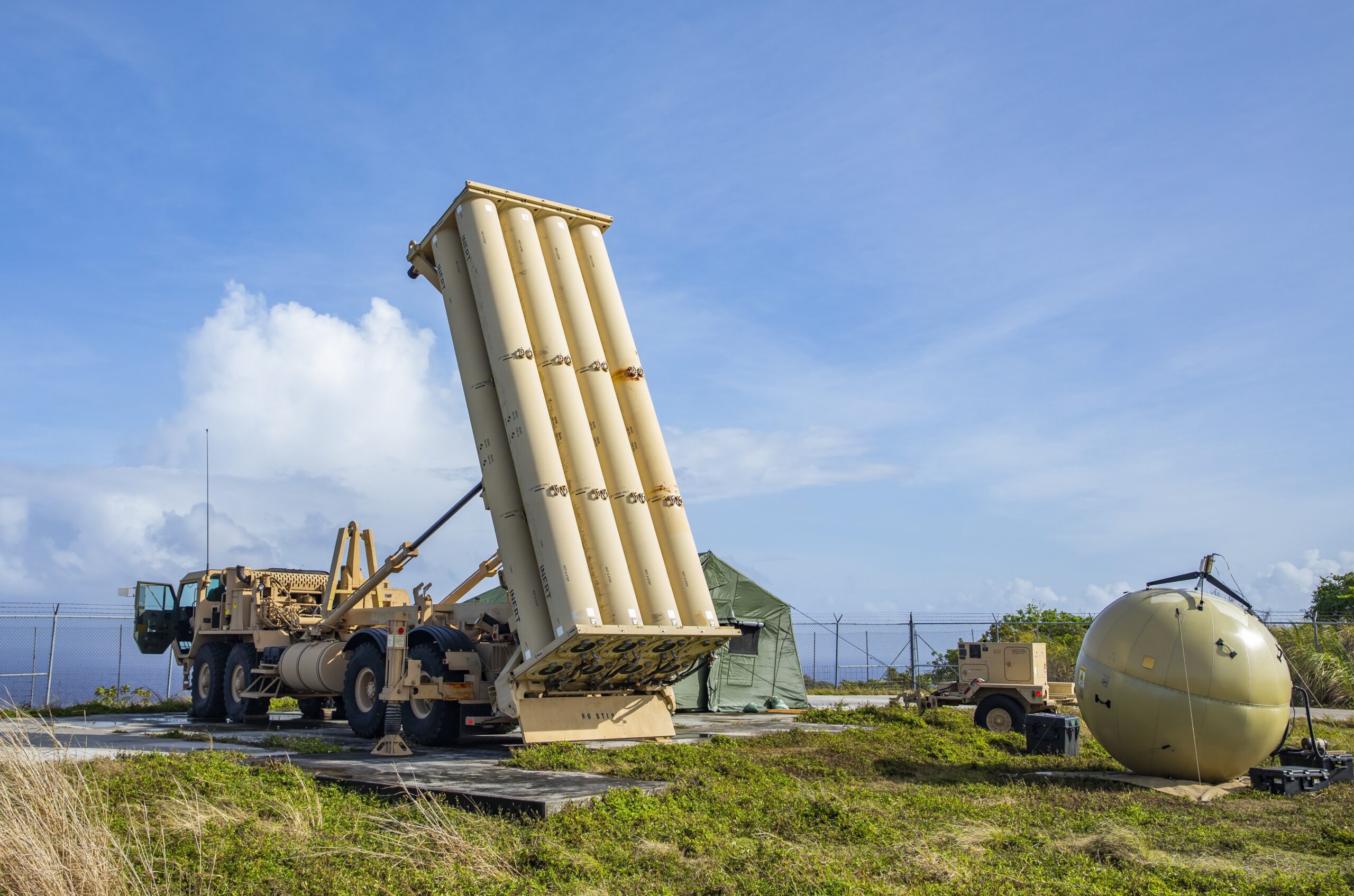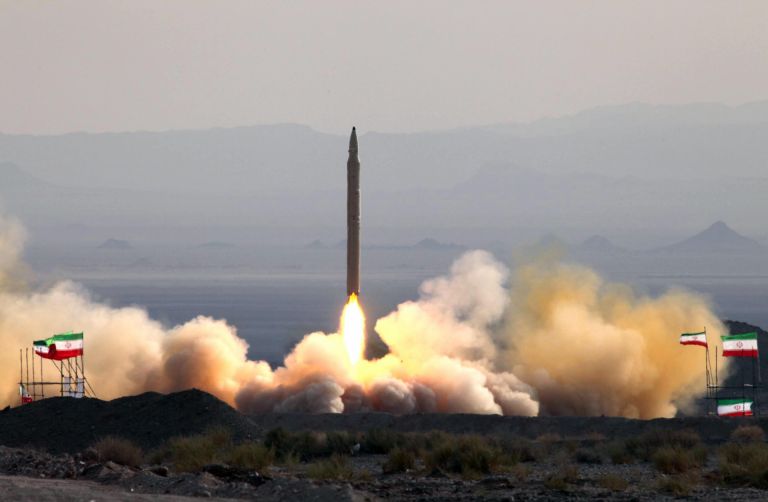Iran Unleashes Qassem Baseer: Precision Ballistic Missile Claimed to Defy THAAD, Strike Anywhere in Middle East
Boasting a strike range of 1,200 kilometers, the Qassem Baseer places American military installations across Iraq, Syria, and the Persian Gulf well within its crosshairs, offering Iran a formidable tool of long-range precision without depending on intercontinental-class missiles.
(DEFENCE SECURITY ASIA) — In a bold assertion of its growing strategic reach, Iran’s Islamic Revolutionary Guard Corps (IRGC) has officially unveiled its latest medium-range ballistic missile, dubbed “Qassem Baseer,” claiming it can evade interception by the United States’ Terminal High Altitude Area Defense (THAAD) system—a cornerstone of Israel’s missile shield architecture.
The introduction of this new solid-fueled missile system arrives at a time of high volatility in the Middle East, with Tehran positioning the Qassem Baseer as a next-generation deterrent capable of reshaping regional threat dynamics.
Boasting a strike range of 1,200 kilometers, the Qassem Baseer places American military installations across Iraq, Syria, and the Persian Gulf well within its crosshairs, offering Iran a formidable tool of long-range precision without depending on intercontinental-class missiles.
In a message laced with strategic warning, Iran’s Defence Minister Aziz Nasirzadeh declared, “If we are attacked or a war is imposed on us, we will respond with full force.”
“We will strike their interests and bases without any hesitation or limitations,” he added, before drawing a line between Tehran’s regional posture and Washington’s footprint: “We have no hostility toward our neighboring countries, they are our brothers, but American bases (located within those countries) are our legitimate targets.”
According to Nasirzadeh, the development of the Qassem Baseer was driven by combat data collected from Iran’s dual-stage Operation True Promise campaigns against Israel in 2024, offering a direct technological evolution over the previous generation Kheibar Shekan missile.
“This missile is equipped with advanced guidance and high maneuverability, and it is capable of penetrating most of the world’s ballistic missile defense systems,” he stated.

“Based on our technical estimates, approximately 5 percent of these missiles will be intercepted by Israel, with the remainder successfully breaching defenses—unlike the much higher interception rates seen during the True Promise operations.”
The Qassem Baseer incorporates an optical terminal guidance system—eliminating dependency on GPS—which significantly boosts its precision while rendering it less vulnerable to electronic warfare or satellite-denial strategies increasingly adopted by NATO-aligned militaries.
Operation True Promise I, launched on April 13, 2024, marked the most severe kinetic exchange between Iran and Israel to date, transitioning their confrontation from covert and proxy warfare into overt missile-on-missile conflict.
That operation, in retaliation for the Israeli strike on Iran’s diplomatic compound in Damascus which killed seven IRGC personnel including two generals, saw over 300 ballistic missiles, cruise missiles, and drones launched—many from Iranian territory—making it the largest combined missile-drone assault ever recorded.
Tehran intensified its campaign in Operation True Promise II on October 1, 2024, after the targeted killings of senior figures including Hamas leader Ismail Haniyeh, Hezbollah’s Hassan Nasrallah, and IRGC commander Abbas Nilforoushan.
The second wave of missile attacks included approximately 200 ballistic missiles, among them hypersonic platforms such as the Fattah-1 and upgraded Kheibar Shekan, showcasing Iran’s rising profile as a developer of advanced missile technology in defiance of Western sanctions.
The missiles struck high-value military infrastructure inside Israel, including the Nevatim and Tel Nof airbases, while several projectiles were reported to have targeted areas surrounding the Mossad headquarters and the cyber-intelligence Unit 8200.

Nasirzadeh stressed that the Qassem Baseer represents a “generational leap” in Iran’s missile arsenal, exceeding even the Kheibar Shekan in both precision and survivability, attributes that radically shift the strategic calculus for Israel and the United States.
“The Qassem Baseer, which was developed from the Kheibar Shekan model, has a Circular Error Probability (CEP) of less than one meter due to its advanced guidance system,” he stated.
This claim, if independently verified, would place the Qassem Baseer among the most accurate ballistic missiles in the world, a status corroborated by previous Kheibar Shekan strikes which reportedly achieved a five-meter CEP during Operation True Promise II.
In addition to pinpoint precision, Nasirzadeh revealed the missile was designed to withstand advanced electronic jamming during trials, maintaining full operational integrity even under heavy electromagnetic attack—a crucial capability in modern missile warfare.
Built with a radar-evading carbon fiber airframe and equipped with both thermal and optical terminal guidance, the Qassem Baseer is optimized to slip past layered defence networks like THAAD and Patriot, using unpredictable flight paths and last-second maneuvering.
Its deployment underscores Iran’s sharpened focus on self-sufficiency in strategic deterrent platforms, representing not just a leap in missile engineering but a geopolitical statement to adversaries and allies alike.
As the specter of regional conflict looms larger—from Gaza to the Red Sea—Iran’s unveiling of the Qassem Baseer sends an unmistakable signal: its missile doctrine is shifting from mere retaliation to precision-based dominance, recalibrating the balance of power across the Middle East.

THAAD (Terminal High Altitude Area Defense) is a U.S.-developed anti-ballistic missile defense system designed to intercept and destroy short-, medium-, and intermediate-range ballistic missiles during their terminal phase (the final stage of descent) using kinetic energy—a “hit-to-kill” approach without explosive warheads.
 THAAD Deployment in Israel:
THAAD Deployment in Israel:
THAAD is not permanently stationed in Israel, but it was temporarily deployed in March 2019 by the U.S. military as part of a strategic message and a live operational drill to demonstrate American commitment to Israeli security.
 Details of the 2019 Deployment:
Details of the 2019 Deployment:
-
Location: Negev Desert, southern Israel
-
Units Involved: U.S. European Command (EUCOM) coordinated with the Israel Defense Forces (IDF)
-
Objective: Enhance interoperability with Israel’s multi-layered missile defense network
-
Strategic Significance: Message to Iran and regional actors that the U.S. can deploy top-tier missile defense capabilities in defense of allies
-
Duration: Temporary—THAAD was withdrawn after the joint drill concluded
 THAAD’s Role in Israel’s Missile Defense Architecture:
THAAD’s Role in Israel’s Missile Defense Architecture:
Israel maintains a multi-layered missile defense system, and THAAD is considered a strategic reinforcement, not a core component. Here’s how it fits:
| Layer | System | Role |
|---|---|---|
| Layer 1 | Iron Dome | Short-range threats (e.g., rockets from Gaza) |
| Layer 2 | David’s Sling | Medium-range threats (e.g., cruise missiles) |
| Layer 3 | Arrow 2 / Arrow 3 | Long-range ballistic missiles (e.g., from Iran) |
| Strategic Backup | THAAD (U.S.-owned) | Extra-layer of exo-atmospheric protection, particularly against advanced Iranian missiles |
— DEFENCE SECURITY ASIA


